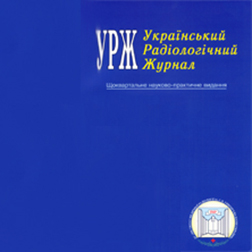UJR 2008, vol XVI, # 3

THE CONTENTS
2008, vol 16, # 3, page 254
V.A. Vinnikov, I.O. Maznik, T.S. Sipko, O.E. Irha
The signs of genome instability in blood lymphocytes of cancer patients 1 year after radiation therapy
Annotation
Objective: To assess the potential of genome instability development in lymphocytes of the patients with uterine body cancer (UBC) 1 year after radiation therapy (RT) by means of analysis of transmitotic dynamics of cytogenetic parameters ex vivo in a long-term lymphocyte cultures.
Material and Methods: Cytogenetic method was used to investigate 12 patients with UBC 1 year after standard course of RT. The findings were compared with those before treatment. FPG-analysis was used to assess the proportions of the cells of different mitosis and frequency of cytogenetic lesions in the cells of consequent mitoses in 50-, 76-, 100-hour cultures of peripheral blood lymphocytes.
Results: Total proportion of the cells of the second (M2), third, and consequent mitoses (M3+) in 50-hour lymphocyte culture in patients 1 year after RT was 30 %, which significantly exceeded the findings before the treatment (20%). Accelerated lymphocyte division 1 year after RT was also observed in 76- and 100-hour cultures. Ten-fold increase of the level of chromosomal aberrations, including dicentrics and rings with fragments, was present in the lymphocytes of the first mitosis (M1) 1 year after RT with mean frequency 10 per 100 cells at superdisperse distribution in the cells. Elimination of chromosomal aberrations was observed during consequent in vitro lymphocyte division. Their total frequency in M3+ reduced to 30 % of the initial level in M1. Intensity of endogenic polyploidization 1 year after RT and before the treatment did not differ. The frequency of non-aberrant polyploids in M3+ was about 2 %. In consequent mitoses of lymphocyte culture before the treatment the frequency of chromatide aberrations reduced 1.5 times. One year after RT it increased 1.5 times from M1 to M3+ reaching the level exceeding the spontaneous one (2.4 and 1.1 per 100 cells, respectively; t = 4.22; p < 0.001).
Conclusion: Increased frequency of aberrations of chromosomal type in blood lymphocytes of the patients 1 year after RT was a residual effect of direct radiation damage to the chromosomal apparatus. Decreased, when compared with the initial one, level of chromatide aberrations reflected weakening of endogenic mutagenesis in the renewed portion of the peripheral lymphocyte population after irradiation. Delayed reproductive death of the cells in the form of inhibited proliferative activity as well as the factors causing increased endogenic polyploidization were absent in the lymphocyte culture of the patients one year after RT. The spectrum of aberrant cells reduced during trans-mitotic elimination of chromosomal aberrations without anomalies in the form of increased complexity of reconstructions. Accumulation dynamics of chromatide aberrations in the consequent mitoses of long-term lymphocyte cultures can be regarded a manifestation of latent genome instability 1 year after RT.
In case of proliferative activation of such lymphocytes in vivo there is a potential possibility of manifestation of similar chromosomal instability in the organism, which is associated with the danger of secondary carcinogenesis and development of long-term radiation reactions in the normal tissues.
Key words: genome instability, chromosome aberrations, lymphocytes, radiation therapy, uterine body cancer.
2008, that 16, # 3, page 265
SCIENTIFIC PRACTICAL CONFERENCE UTTRO "ACTUAL QUESTIONS OF RADIATION ONCOLOGY" ON SEPTEMBER, 18-19, 2008, KHERSON
MATERIALS OF CONFERENCE
Social networks
News and Events
We are proud to announce the annual scientific conference of young scientists with the international participation, dedicated to the Day of Science in Ukraine. The conference will be held on 20th of May, 2016 and hosted by L.T. Malaya National Therapy Institute, NAMS of Ukraine together with Grigoriev Institute for medical Radiology, NAMS of Ukraine. The leading topic of conference is prophylaxis of the non-infectious disease in different branched of medicine.
of the scientific conference with the international participation, dedicated to the Science Day, «CONTRIBUTION OF YOUNG PROFESSIONALS TO THE DEVELOPMENT OF MEDICAL SCIENCE AND PRACTICE: NEW PERSPECTIVES»
We are proud to announce the scientific conference of young scientists with the international participation, dedicated to the Science Day in Ukraine that is scheduled to take place May 15, 2014 at the GI “L.T. Malaya National Therapy Institute of the National academy of medical sciences of Ukraine”. The conference program will include the symposium "From nutrition to healthy lifestyle: a view of young scientists" dedicated to the 169th anniversary of the I.I. Mechnikov.
Ukrainian Journal of Radiology and Oncology
Since 1993 the Institute became the founder and publisher of "Ukrainian Journal of Radiology and Oncology”:


